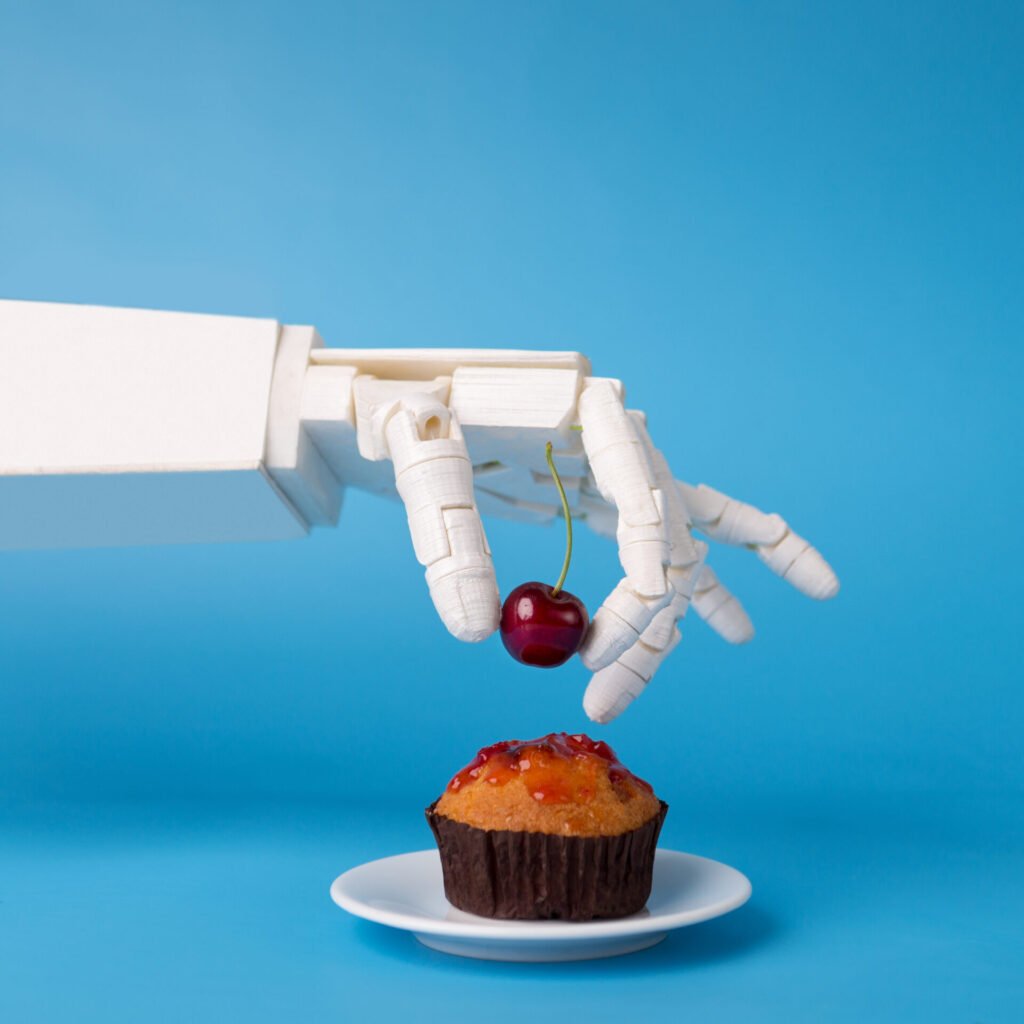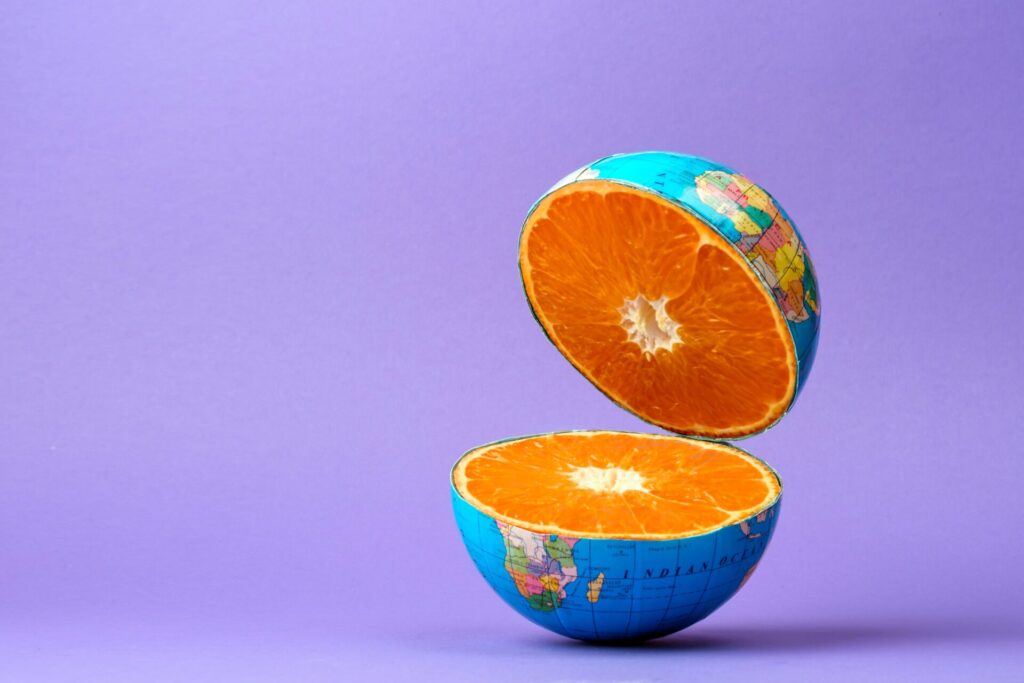Air-fried jellyfish with a side of seaweed and some air-grown bacteria anyone?
It may sound gross now, but according to London’s Natural History Museum, in 100 years’ your grandkids will likely be chowing down on this dish, along with a range of other culinary delights that include burgers made from a matrix of lab grown muscle cells, slices of processed insect protein and cactus salad. Nom, nom.
While photos of this future food are unlikely to get you many likes on Instagram, there are several benefits – mainly that it will be sustainable, abundant and nutritious.
According to a report by the museum: ‘Current farming, fishing and industrial practices are having a negative impact on nature, and the way we eat needs to become much more sustainable.’
It predicts that jellyfish, chips and cactus salad could become a regular on western menus in the next couple of decades as an answer to depleting fish stocks and as a way to manage this proliferating species.

In mouthwatering (or not depending on your tastes) detail, the report explains that jellyfish are low in calories and fat, and high in protein and antioxidants. ‘Fresh jellyfish have a delicate, salty flavour and a slightly chewy body,’ it says. ‘When dried, jellyfish look firm but give away to a soft feel on the tongue, making it a great alternative to crisps.’ There are 25 species of edible jellyfish in the world, the report goes on, many of which are consumed in Asian countries.
Likewise, seaweed is also a commonly used ingredient, prized for its nutritious profile and likely to become more widespread in western diets, particularly as more than a third of the world’s soil is degraded, which will impact crop yields in the future.
Feed The World
Indeed, the search for the foods of tomorrow is one of the vital challenges facing mankind. The global population is projected to reach nearly 10 billion by 2050 – that’s a lot of mouths to feed. And the need for sustainable and abundant sources of nutrition will become more acute as incomes increase across the developing world. According to a 2019 report by the World Resources Institute, overall food demand is on course to increase by more than 50 per cent, and demand for animal-based foods by nearly 70 per cent because, it explains, as societies become more wealthy, they tend to favour western-style meat-heavy diets.
Agriculture already uses almost half of the world’s vegetated land but hundreds of millions of people remain hungry. It was estimated that more than 700 million people faced hunger in 2023, around nine per cent of the world’s population, and 150 million more than in 2019. That number is expected to increase with global warming
At current levels, the global food production industry will be unable to keep up with demand without profound changes. Even today, when agriculture already uses almost half of the world’s vegetated land, hundreds of millions of people remain hungry. It was estimated that more than 700 million people faced hunger in 2023, around nine per cent of the world’s population, and 150 million more than in 2019. That number is expected to increase with global warming, which creates a feedback loop in which current agricultural practices that generate one-quarter of annual greenhouse gas emissions intensify to meet demand, creating more extreme weather events, and more subsequent hunger.
Researchers at the World Resources Institute (WRI) estimate that by 2050 there will be a 7,400 trillion calorie deficit between the amount of food produced at 2010 levels, and the amount needed to feed the world’s population. If nothing changes, an extra 593 million hectares of agricultural land will be needed to fill this ‘food gap’, an area nearly twice the size of India. The WRI calls for increased efficiency of natural resource use as the single most important step toward meeting both food production and environmental goals.
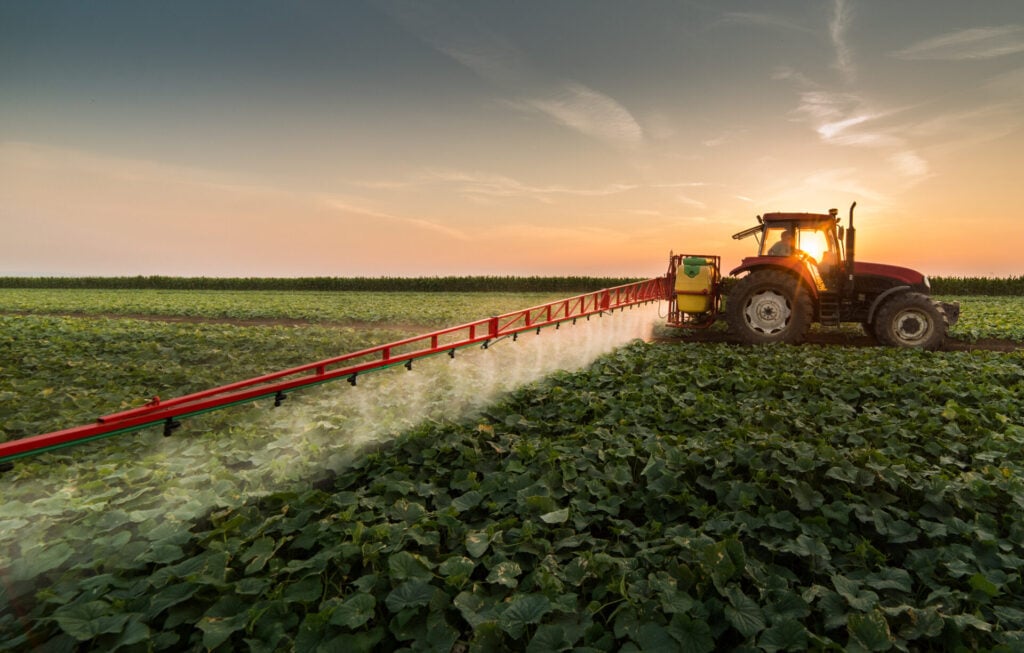
It states: ‘If today’s levels of production efficiency were to remain constant through to 2050, then feeding the planet would entail clearing most of the world’s remaining forests, wiping out thousands more species, and releasing enough greenhouse gas emissions to exceed the 1.5°C and 2°C warming targets enshrined in the Paris Agreement – even if emissions from all other human activities were entirely eliminated.’
Clearly, the status quo is not an option.
Hungry For Change
Recommendations such as reducing food loss and waste, and shifting the diets of high meat consumers toward plant-based foods, are already slowly catching on globally. According to the United Nations, a fifth of the world’s food was wasted in 2022. It launched its voluntary food waste reduction goal in 2015. The UK, which is a signatory, managed an 18 per cent reduction in food waste between 2007 and 2021.
And meat consumption is declining in the UK and across Europe, particularly in Germany. Even North America and Oceania, which historically have strongly preferred beef, are expected to see significant decreases in per capita consumption, according to a 2023 report published by the Organization for Economic Cooperation and Development and the UN Food and Agriculture Organization.
The WRI recommends other measures to fill the food gap, such as avoiding any further expansion of biofuel production and improving women’s access to education and healthcare in Africa to accelerate voluntary reductions in fertility levels.
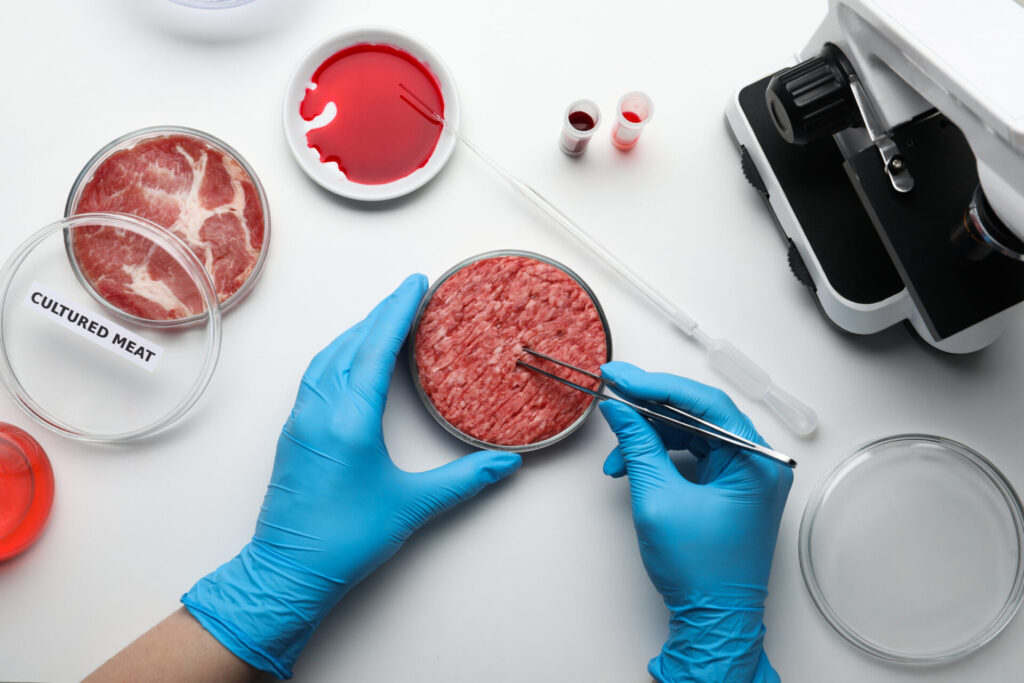
Still, these measures on their own will not be enough. Scientific developments and dietary changes will have to happen too, which is why the WRI calls for large increases in research and development funding, and flexible regulations to encourage private industry to develop and market new food and agricultural technologies. As examples of measures that will help fill the gap, it cites additives that reduce methane emissions from rice and cattle, improved fertilizers, organic sprays that preserve fresh food for longer periods, and plant-based beef substitutes.
In 2022, researchers at Kew Botanic Gardens in London pointed out that currently we rely on just 15 crops to provide 90 per cent of our energy intake. They identified several plant species likely to play a bigger role in future foods, including cacti and seaweed.
There are more than 1,500 species of cacti, many of them edible. They’re already a staple in Latin America, where they are grilled and served in eggs or in salads and tacos.
Rich in fibre, vitamins and micronutrients, eating wild plants such as cacti can meet demands for a wider variety of crops and provide an income for farmers in developing countries.
According to the Kew report, porridge oats could be replaced with fonio, a grass species native to the savannas of West Africa which tolerates dry conditions and can be used to make porridge, couscous and even drinks. It is high in iron, calcium, several amino acids, and B vitamins.
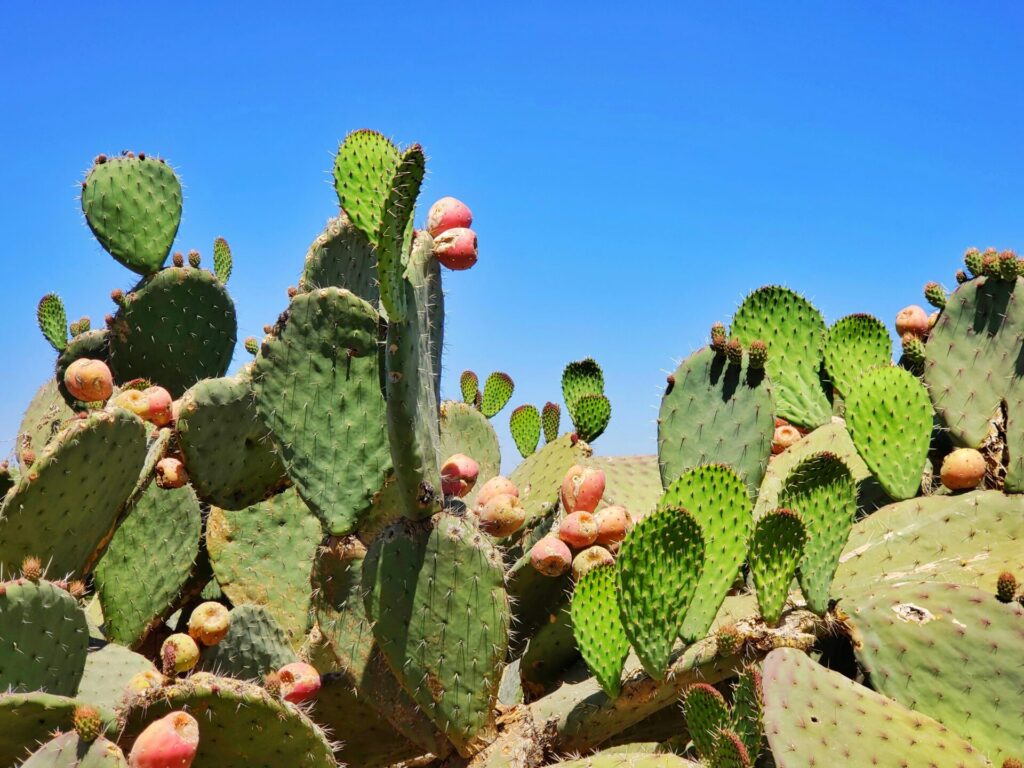
Other plants which could become common cupboard staples include Akkoub, a thistle-like plant from the eastern Mediterranean and Middle East; pandanus, a small-trunked tree that produces large, segmented fruit similar to pineapple which can be eaten raw or cooked, and chaya, a large, fast-growing leafy shrub native to the Yucatan Peninsula of Southern Mexico which is also known as tree spinach and is rich in protein, vitamins, calcium and iron but which must be cooked, as the leaves are highly toxic when raw.
Thankfully, a lot of high-tech food will be familiar to our palates. For example, scientists are looking to harness the abilities of legume plants such as peas and beans which host bacteria in their roots that convert nitrogen in the air into chemicals that plants can use. This could lead to self-fertilizing crops which enrich the soil they are planted in and a reduction in greenhouse gas emissions caused by the manufacture and use of fertilizers.
Meanwhile, scientists at University of Illinois Urbana-Champaign have looked at ways to boost photosynthesis in plants, which is the process whereby energy from the sun is used to synthesise water and carbon dioxide into nutrients. In unverified reports, they claimed to have increased yields up to a third in modified soya beans.
The most exciting developments are happening at the bleeding edge of science where developers are creating food from air.
Future Food From Thin Air
Earlier this year, Finnish company Solar Foods became the first to produce food commercially using electricity to split water into oxygen and hydrogen, then feeding the latter (along with carbon dioxide captured from the company’s ventilation system) to single-cell organisms, similar to yeast used in baking, that use it as their main food source.
These microbes are grown in a vat in a solution containing other minerals needed by cells, such as iron, magnesium, calcium and phosphorus. They are then killed by a pasteurisation process and dried with hot air. The resulting protein-rich yellow powder, called Solein, can be used in food. Compared with producing the same amount of plant proteins, the company claims producing Solein results in a fifth less CO2 emitted, while requiring a 20th of the land and a 100th of the water.

The company is hoping Solein will become a widely-used meat alternative. It can also be used in cheese and milkshakes, and as an egg replacement in noodles, pasta and mayonnaise. It is already approved for use in Singapore where last year a restaurant created a Solein chocolate gelato, replacing dairy milk.
Other companies are developing similar products. US-based Air Protein uses hydrogen-eating microbes and Dutch company Deep Branch makes fish food using its Proton protein that it claims is 60 per cent less carbon-intensive than conventional proteins.
For manufacturers, these novel proteins might have an advantage over cultured meat, which is meat grown in a lab using cells which are then formed into products, because they are much cheaper to produce. However, cultured meat, which is forecast to be one of the most widely eaten foods of the future, may prove more popular with consumers, as it is made from the same muscle cells as normal meat, so it tastes better in a bun than air-dried bacteria, or a jellyfish for that matter.
What else will be on the menu
As chocolate, coffee, seafood and grape all becomes scarce or extinct because of the climate crisis humans will be tasting new and unpredictable flavours. Here’s what could be on the menu…
Insects – especially ants and grasshoppers – will be turned into burgers and become popular. Rich in protein, mineral and vitamins as well as fibre, insects are already eaten in Asia and Africa, where fried crickets, roasted maguey worms and caterpillars are all consumed as delicacies.
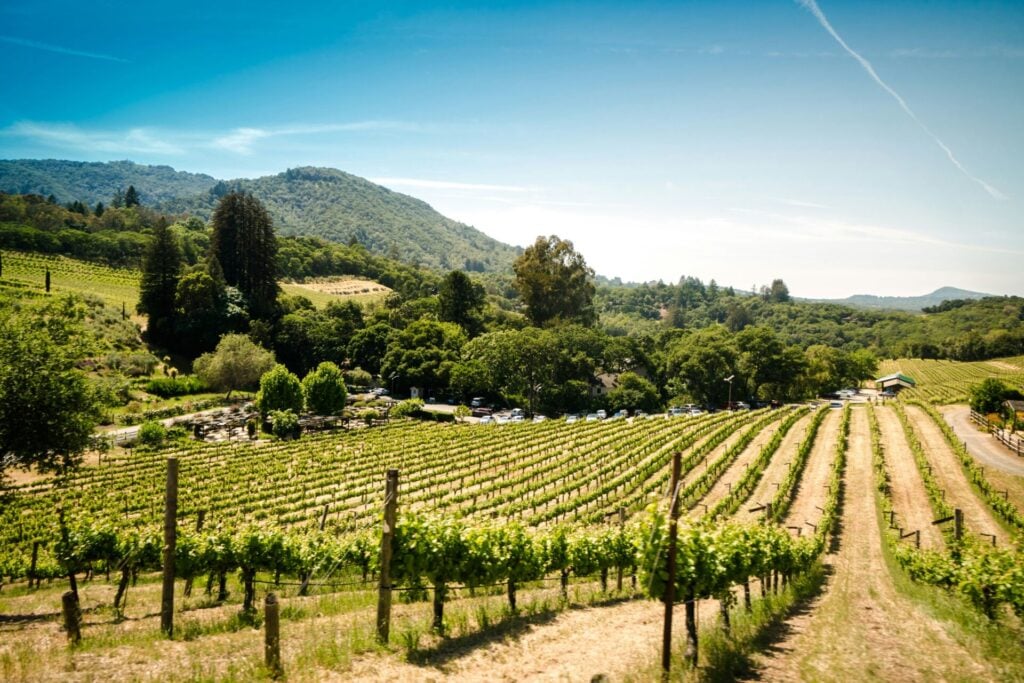
Insects need significantly less space, water and energy, emit fewer greenhouse gases, can be fed on unwanted fruit and veg and are versatile. They can e ground up into flour, paste, or made into multiple dishes including snack bars.
Hydroponic vegetables and vegan sushi. The future of food is already being tackled by many countries after the United Nations launched its Zero Hunger by 2030 goal, which includes food waste prevention and regenerative agriculture. Growing plants without using soil, and feeding them on mineral nutrient salts dissolved in water, means vegetables can be grown in living walls, roof gardens and on balconies.
Personalised Nutrition will be based around genetic make-up, the individual’s environment and lifestyle habits and an app will determine what food is needed for better gut health, allergy managements, hydration and to combat any health problems. Cell-grown cheese and 3D printd tortilla chips will all be common place.

